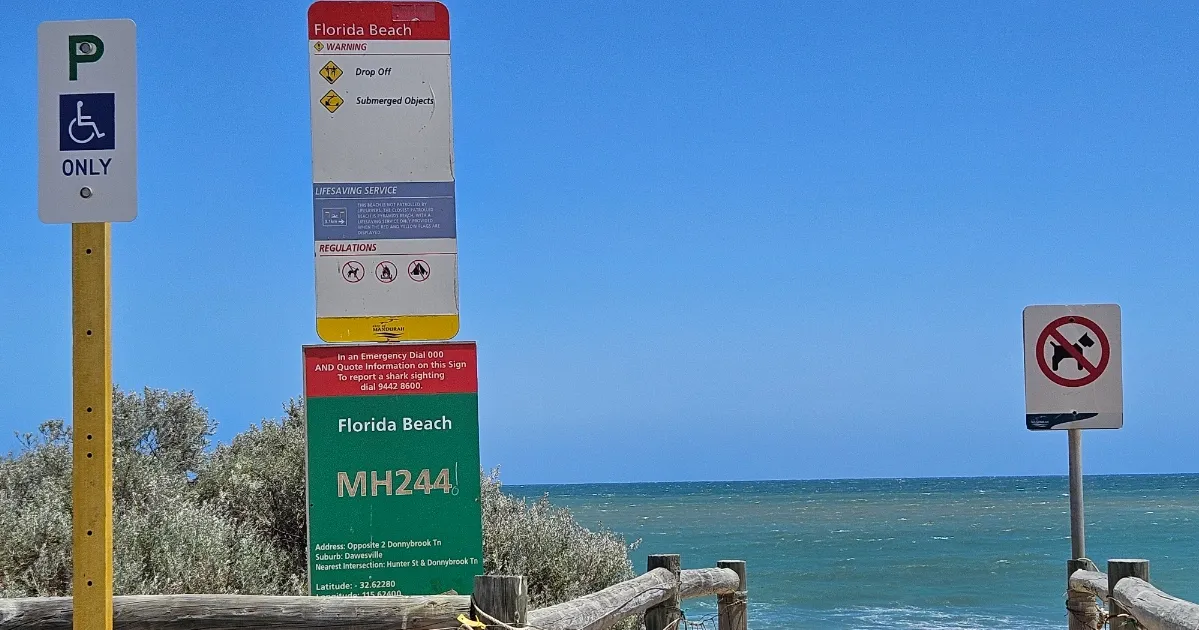
Understanding BEN Signs and Beach Safety
Beaches are for soaking up the sun, not emergencies! Always keep an eye on beach safety signs like BEN Signs to stay informed.
The West Australian coastline is one of the country’s most cherished treasures. From sprawling sandy beaches to pristine waters, the coast attracts millions of visitors each year. However, the beauty of the ocean comes with risks, and ensuring safety is paramount. BEN signs, an essential beach safety initiative, play a critical role in guiding beachgoers. By understanding and respecting these signs, visitors can enjoy the coast while minimizing risks.
The Purpose of BEN Signs
BEN, short for Beach Emergency Number, is a standardized system that provides critical location-specific information at beaches. These signs are strategically placed along Australia's coastline and are designed to assist beach visitors in the event of emergencies. Each BEN sign displays a unique alphanumeric code that corresponds to a specific location, allowing emergency services to respond accurately and efficiently.
Importantly, these signs are not just markers for emergencies but also contain valuable information about potential hazards, safety protocols, and guidelines for staying safe on the beach.
Types of Beach Safety Signs
Beach safety signs, including BEN signs, come in various forms and serve distinct purposes. Some of the most common types include:
- No Swimming Signs: Placed in areas where swimming is prohibited due to hazards such as strong currents or submerged rocks.
- Rip Current Warnings: Highlighting zones where rip currents are likely to occur, helping swimmers avoid these dangerous areas.
- Surfing Zones: Designating areas where surfing is allowed, ensuring separation between surfers and swimmers for safety.
- First Aid Stations: Indicating where first aid assistance can be accessed in case of an emergency.
- Shark Warning Signs: Alerting visitors of potential shark activity in coastal waters.
The Importance of Following Beach Safety Signs
Beach safety signs are not merely suggestions; they are crucial for the protection of everyone on the beach. Ignoring these signs can lead to accidents, injuries, or even fatalities. For instance:
1. No Swimming signs exist because swimming in certain areas can result in encountering dangerous conditions like powerful rip currents or hidden hazards.
2. Entering designated surfing zones without proper knowledge can lead to collisions or impede surfers' ability to enjoy the water safely.
By following these signs, beachgoers contribute to safer coastal environments, reducing preventable incidents and helping emergency services focus on critical situations.
BEN Signs in Emergency Situations
One of the most significant benefits of BEN signs is their usefulness in emergencies. When time is of the essence, BEN signs provide precise location details to callers reaching out to emergency services. A quick explanation of the alphanumeric identifier on the sign ensures responders can locate the incident swiftly, which can be lifesaving in medical emergencies or during water rescues.
These signs empower visitors to take more assertive actions when addressing potential dangers, making them not just markers but part of a robust safety ecosystem on our beaches.
Practical Tips for Safe Beach Visits
While beach safety signs are an important tool, safe practices go hand-in-hand with following posted guidance. Here are some additional tips to ensure a secure and enjoyable beach outing:
- Swim Between the Flags: Always swim in areas patrolled by lifeguards. These zones are monitored for hazards and are the safest spots for swimming.
- Stay Hydrated: Bring plenty of water and stay shaded to avoid heat exhaustion during long days by the shore.
- Learn Basic Water Rescue Techniques: Knowing how to identify signs of a rip current and assist safely can make a difference in emergencies.
- Look Out for Children: Ensure children are always within reach, and keep them away from designated danger zones.
- Avoid Alcohol While Swimming: Alcohol impairs judgment and reaction times, increasing drowning risks.
Preparation and awareness can make every trip to the coast enjoyable and free of unforeseen safety concerns.
Creating a Culture of Responsibility
BEN signs, along with other beach safety measures, rely on the community's participation to maintain their effectiveness. Educating locals and tourists about the significance of these signs fosters a culture of shared responsibility. Volunteer initiatives and community outreach programs can also enhance the safety protocols at beaches.
WA's magnificent coastline is a source of joy and adventure for millions, but it must be enjoyed responsibly. BEN signs serve as invaluable tools for navigating beach safety and ensuring swift emergency responses. By following the guidance provided through these signs and adhering to recommended safety practices, visitors can contribute to a safer environment for themselves and others.
Whether it’s through avoiding restricted areas, identifying rip currents, or staying informed about local hazards, BEN signs help balance fun and security along our coasts. With these measures in place, beaches can remain a place of cherished memories for generations to come.
09 Jan 2025



